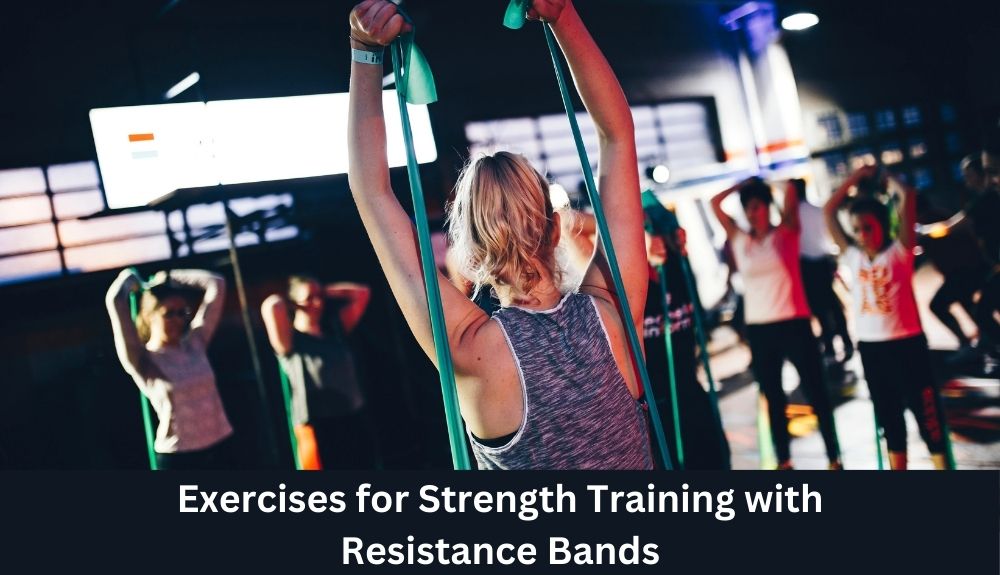Introduction to Resistance Bands
Welcome to the world of resistance bands – versatile tools that pack a powerful punch in your fitness arsenal. Whether you’re aiming to build strength, improve flexibility, or recover from an injury, these elastic bands offer endless possibilities for enhancing your workouts. Get ready to unlock their full potential as we dive into the benefits, types, exercises, and tips for incorporating resistance bands into your routine. Let’s band together and take your fitness journey to the next level!
Benefits of Using Resistance Bands
Resistance bands offer a multitude of benefits that make them a valuable addition to any fitness routine. One major advantage is their versatility – they can be used for strength training, mobility work, and rehabilitation exercises.
Using resistance bands helps improve muscle strength and endurance without the need for heavy weights or bulky equipment. They provide constant tension throughout the entire range of motion, making workouts more effective.
Additionally, resistance bands are portable and lightweight, making them perfect for on-the-go workouts or home gym setups. They are also gentle on joints, reducing the risk of injury while still providing a challenging workout.
Whether you’re a beginner looking to build strength or an experienced athlete wanting to add variety to your routine, resistance bands can help you achieve your fitness goals effectively.
Types of Resistance Bands
When it comes to resistance bands, there are various types available to suit different needs and preferences.
The most common type is the looped resistance band, which is versatile for a wide range of exercises such as squats, lunges, and bicep curls.
Another popular option is the tube resistance band with handles, providing a comfortable grip for movements like chest presses and rows.
For those looking for more intensity in their workouts, there are also fabric-covered resistance bands that offer increased durability and strength.
Mini bands are perfect for targeting smaller muscle groups or adding extra resistance to bodyweight exercises like glute bridges and lateral leg raises.
No matter your fitness level or workout goals, incorporating different types of resistance bands can add variety and challenge to your routine.
Exercises for Strength Training with Resistance Bands

Looking to level up your strength training routine? Resistance bands might just be the game-changer you need. These versatile tools can add an extra challenge to your workouts and help target different muscle groups effectively.
One popular exercise with resistance bands is the banded squat. Place the band around your thighs or above your knees as you perform squats, feeling the burn in your glutes and quads like never before. Another great move is the banded push-up, where placing a resistance band across your back adds intensity to this classic upper body exercise.
For those looking to work on their arms, try incorporating bicep curls or tricep extensions with resistance bands into your routine. The constant tension provided by the bands helps engage and strengthen these muscles more efficiently than traditional weights alone.
Don’t underestimate the power of resistance band when it comes to building strength – they may just become your new favorite workout tool!
Mobility and Rehabilitation with Resistance Bands
Resistance bands are not just for strength training; they can also be valuable tools for improving mobility and aiding in rehabilitation. When it comes to mobility, resistance bands provide gentle yet effective resistance that helps increase flexibility and range of motion in various joints. Whether you’re looking to enhance your hip flexibility or improve shoulder mobility, resistance bands offer a versatile solution.
In terms of rehabilitation, resistance band allow for controlled movements that can aid in recovering from injuries or surgeries. The adjustable tension levels make it easy to tailor exercises to your specific needs and gradually progress as you regain strength and function.
By incorporating resistance bands into your routine, you can target specific muscle groups while also working on stability and balance. This makes them ideal for individuals recovering from injuries or seeking to prevent future ones by strengthening weak areas.
Remember, always consult with a healthcare professional before starting any new exercise program, especially if you are dealing with an injury or medical condition.
Tips for Incorporating Resistance Bands into Your Workout Routine
Looking to spice up your workout routine with some added resistance? Resistance bands are the perfect tool to take your training to the next level. Here are some tips for incorporating them seamlessly into your workouts.
Start by choosing the right resistance band for your fitness level and goals. Whether you’re a beginner or an experienced athlete, there’s a band out there for you. Experiment with different tensions to find what works best for each exercise.
Incorporate resistance band into classic exercises like squats, lunges, and bicep curls to add an extra challenge and engage more muscle groups. Get creative and try new movements to keep things exciting and target different areas of your body.
Don’t forget about mobility work! Use resistance bands for stretching and improving flexibility, helping prevent injuries and enhance recovery post-workout.
Mix it up by combining resistance band with other equipment or bodyweight exercises for a full-body workout that will leave you feeling stronger than ever before.
Choosing the Right Resistance Band for Your Needs

When it comes to choosing the right resistance band for your needs, there are a few key factors to consider. Think about the level of resistance you require. Bands come in various levels ranging from light to heavy, so select one that aligns with your strength and fitness goals.
Consider the type of exercises you will be doing. For example, longer loop bands are great for lower body workouts, while tube bands with handles work well for upper body exercises. It’s important to choose a band that suits the movements you plan on incorporating into your routine.
Another aspect to keep in mind is durability. Look for bands made from high-quality materials that won’t snap or lose elasticity quickly. This ensures longevity and safety during your workouts.
Factor in portability if you plan on using the bands while traveling or outside of your home gym. Opt for bands that are lightweight and easy to pack so you can stay consistent with your training wherever you go.
Conclusion
Resistance bands are indeed versatile tools that can help you achieve your fitness goals, improve your mobility, and aid in rehabilitation. From strength training to gentle stretching exercises, resistance bands offer a wide range of benefits for individuals of all fitness levels.
Incorporating resistance band into your workout routine is simple and effective. By choosing the right type of band and performing a variety of exercises targeting different muscle groups, you can unlock the full potential of these affordable and portable tools.
Whether you are looking to increase strength, enhance flexibility, or recover from an injury, resistance band can be a valuable addition to your fitness arsenal. So why wait? Start incorporating resistance bands into your workouts today and experience the numerous benefits they have to offer!





















